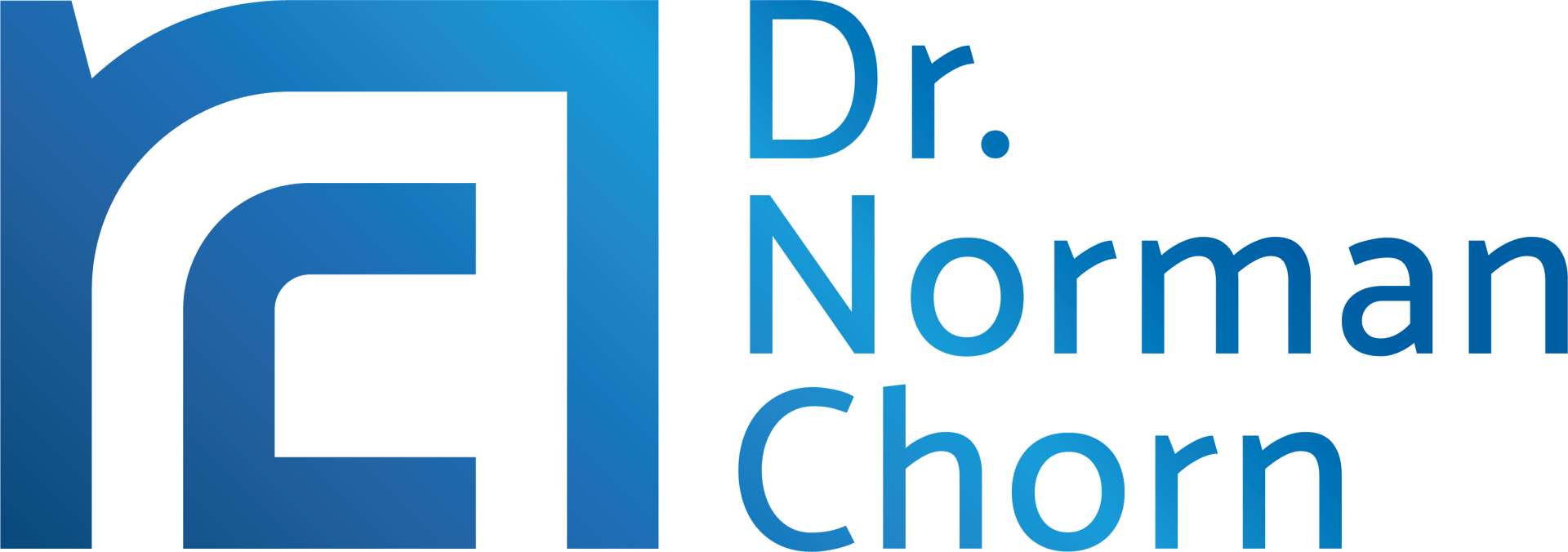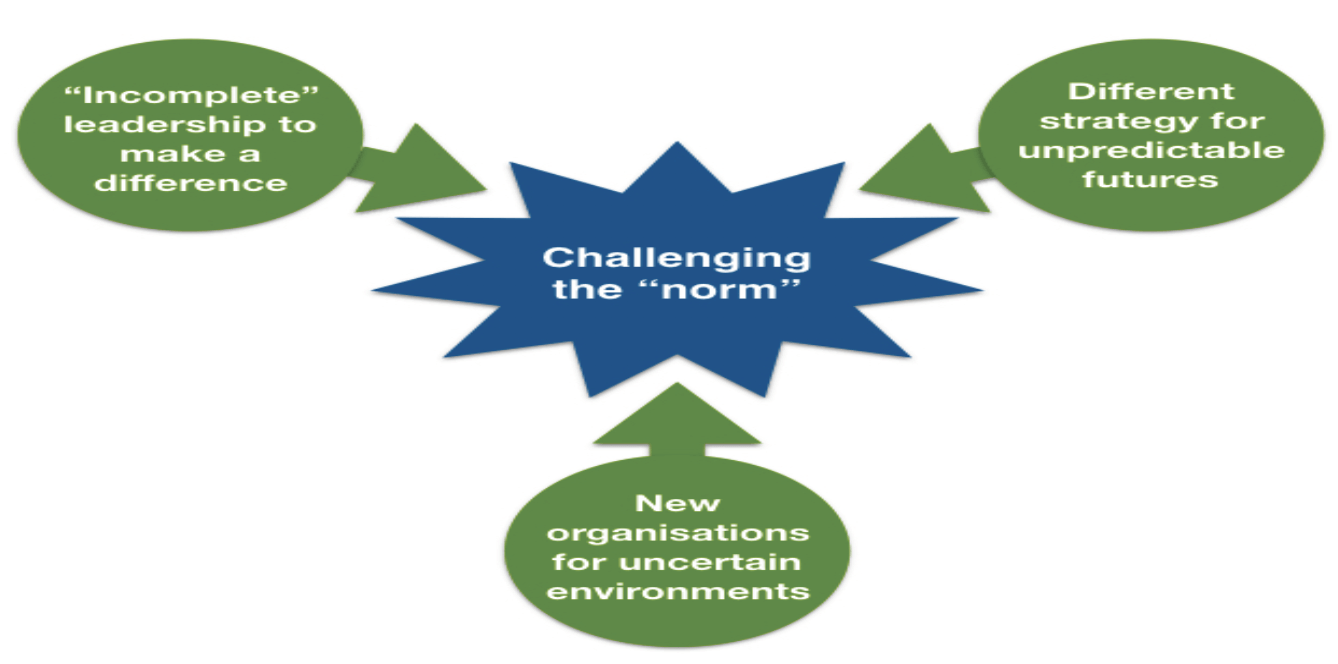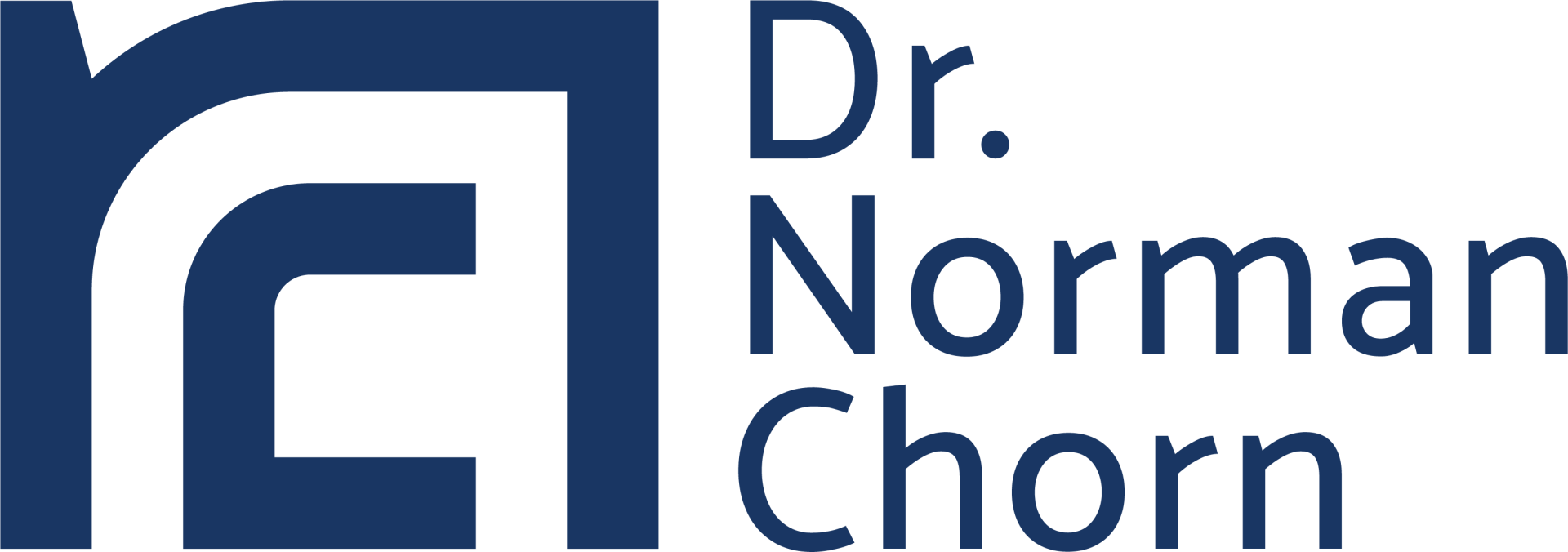This year, we must challenge the “norm”
WHAT AN INCREDIBLE NEW YEAR!
Whatever your world view, the start of 2020 has been momentous. We’ve been overwhelmed by the drought, bushfires — and the rapid spread of the coronavirus has given added emphasis to the term ‘viral’. It’s easy to be overwhelmed by the implications of it all. As I reflected on all of this during my summer break in the southern hemisphere, I have become aware that so many of our traditional coping mechanisms are failing us. I thought about my own work and how I have been trying to make sense of it all. I am realising that I need to challenge the norm in three critical areas of my own work — leadership, strategy and organisation. My views on these issues are summarised in the diagram below:
NEW WAYS TO THINK ABOUT LEADERSHIP
The complexity and multiple demands of leadership today may seem to require a bewildering array of skills and talents from leaders. The use of 360° assessments and competency models seek to “iron out the deficiencies” in leaders’ capabilities and make them well-rounded generalists.
But the real contribution of a leader is her unique style and the ability to bring something new and different to the organisation — rather than simply possessing a rounded set of competencies. Talent management should focus on building a portfolio of diverse and innovative people across the leadership cohort — rather than seeking to develop an individual’s competence across a wide range of capabilities.
We should be seeking out and growing the unique and individual talents of people — this is what provides the resilience capable of thriving in an unpredictable and demanding environment. So, be an incomplete leader! In today’s world, the leader’s role is no longer to command and control, but to cultivate and coordinate the actions of others across the organisation. When leaders see themselves as incomplete — having strengths and weaknesses — they are more likely to make up for their missing skills by relying on others.
DIFFERENT APPROACHES TO DEVELOP STRATEGY
The complexity in our business environment produces unheralded uncertainty and change. This much we know. So, why do we continue to use outdated tools and processes for our strategy and planning? The task of setting strategy is difficult enough — but we make it harder for ourselves if we rely on traditional approaches that are based on outdated assumptions about the environment. Complex systems (like our environment and our organisations) are characterised by unpredictable and emergent outcomes — and we need to approach these systems in quite different ways.
Firstly, we should separate the processes of planning and strategy. Planning focuses on building a logical set of actions / initiatives to achieve a pre-determined objective. It assumes we can articulate and quantify this objective with some certainty and clarity. Strategy, on the other hand, is about positioning the organisation for the future in an uncertain environment. It requires a deep understanding of the key variables in the environment, how they interact and unfold into the future. Both planning and strategy are important, but they need to be separated to get full effect from both.
Secondly, we need to recognise that organisations (and we, for that matter) face alternative futures at any point in time. The future is not pre-determined, it depends on the actions of others as well as ourselves. This suggests the use of tools and techniques to promote scenario thinking — the ability to envisage alternative futures, and then prepare for how we might need to operate in those future conditions. The shift is from predicting the future towards developing those capabilities required to operate in alternative futures. And finally, we should recognise that action is often the enemy of thought. Our continued obsession with responding quickly and being action-oriented can drive out strategic thinking.
In addition to the analysis of what’s going on, strategic thinking also requires some insight into what this means. We call this strategic intuition — the ability to explore different ways to make meaning of all the information to understand the true nature of the challenge. Strategic intuition requires some quiet reflection and becomes almost impossible in a frenetic action-oriented environment.
NEW ORGANISATIONS FOR UNCERTAIN ENVIRONMENTS
Resilience is another important requirement for organisational success in an uncertain environment. In essence, it’s about developing a wide zone of tolerance — the ability to remain effective across a diverse range of future environmental conditions. I believe that three characteristics contribute to resilience in organisations.
Firstly, these organisations have an evolutionary strategy - ie: the purpose of the organisation (the “why”) remains very clear, but the strategy emerges and evolves as the organisation interacts and learns from its environment. The notion of ‘emergence’ is characteristic of complex systems - the process is ongoing and should take place as a strategic conversation through the organisation. This internal adaptation process is crucial, since a rigid organisational strategy and structure has little hope of surviving in a constantly evolving landscape. Key to an evolutionary strategy is the notion of distributed leadership through the organisation. The strategic conversation is shared widely with many inputs and perspectives. I believe there is more danger in limiting the internal access to your strategy so as to maintain confidentiality, than there is in your ‘competitors’ finding out about your strategy.
Finally, we need to understand the high level of interdependence between the various functions and elements within an organisation. Complex systems are characterised by high internal integrity - we cannot make changes in one part of the organisation without it affecting the rest of the organisation. Because of this, the traditional reductionist approaches of management (whereby we focus on functions and parts separately) are much less effective. We need to understand and work on the organisation as an overall integrated system.
MOVING AHEAD
So, 2020 is a good time to challenge our usual approaches to leadership, strategy and organisation. Even if we simply re-affirm our existing ways of doing things, we will have started the important task of recognising that the practices that have got us this far are perhaps insufficient for the next stage of the journey.
When we think of the year that has just been, 2017 has to be a time to challenge the traditional approaches we’ve been using to understand leadership, strategy and organisation.
Subscribe to our regular articles, insights and thought leadership





